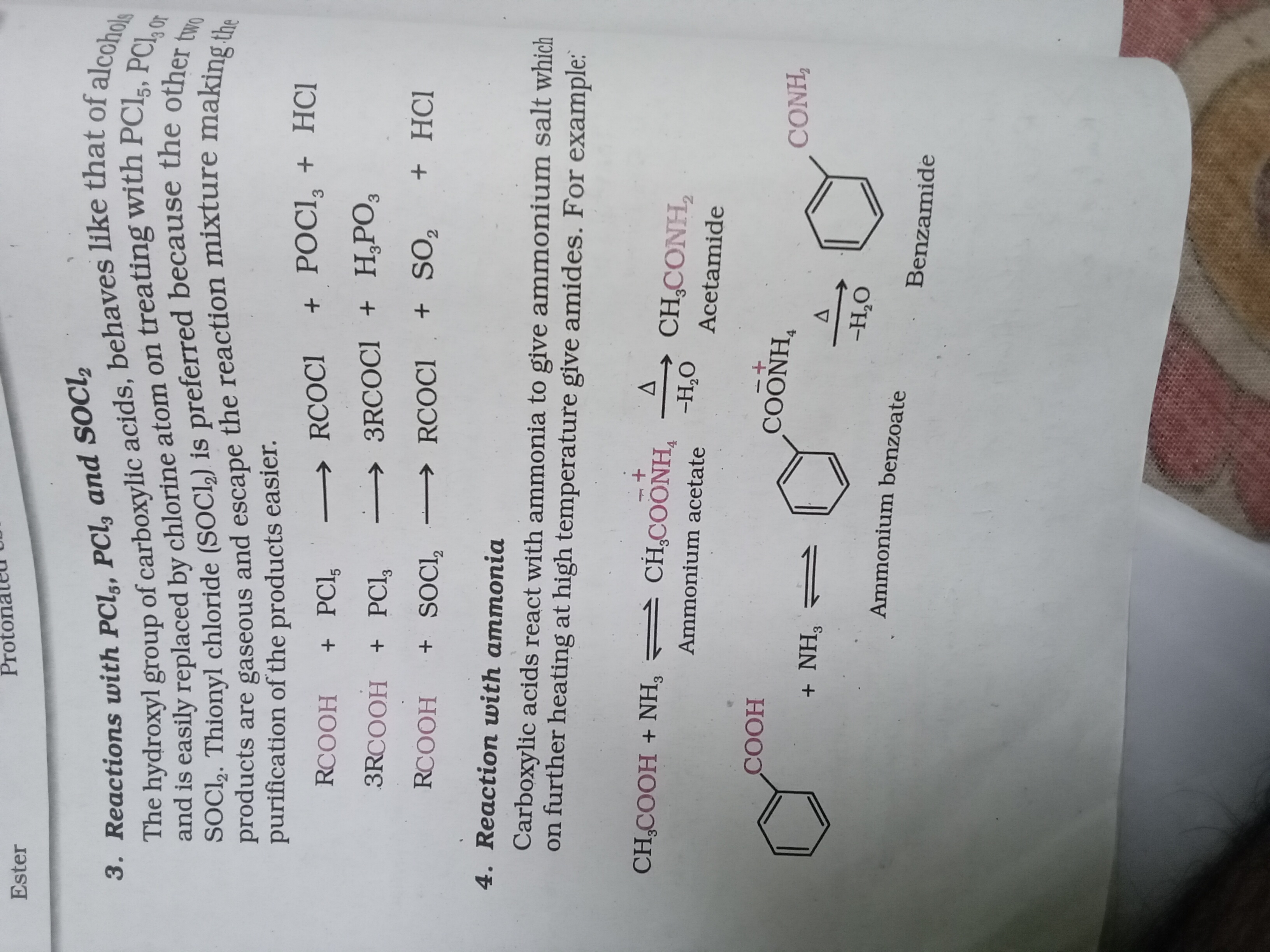
Understand the Problem
The question provides information about reactions involving carboxylic acids with reagents like PCl5, PCl3, SOCl2, and ammonia, illustrating their chemical transformations, but does not ask a specific question.
Answer
Carboxylic acids form acyl chlorides with PCl5, PCl3, or SOCl2, and amides with ammonia.
Carboxylic acids react with PCl5, PCl3, and SOCl2 to form acyl chlorides, with SOCl2 being preferred for its ease of purification. Carboxylic acids also react with ammonia to form ammonium salts, which upon heating convert into amides.
Answer for screen readers
Carboxylic acids react with PCl5, PCl3, and SOCl2 to form acyl chlorides, with SOCl2 being preferred for its ease of purification. Carboxylic acids also react with ammonia to form ammonium salts, which upon heating convert into amides.
More Information
Carboxylic acids can be converted to various derivatives, each having distinct reactivity and uses. Acyl chlorides are versatile intermediates in organic synthesis, while amides are important in both biological and industrial processes.
Tips
Avoid confusion between the different reagents (PCl5, PCl3, SOCl2) and their by-products. Remember the distinction between ammonium salts and amide formation processes.